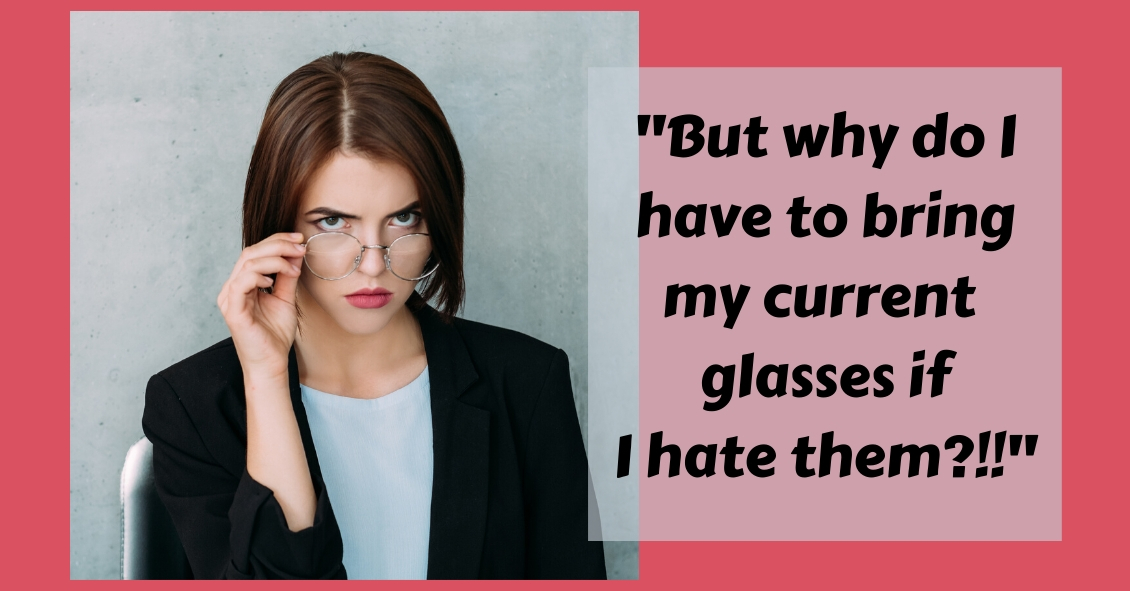
Despite requests that patients bring their current glasses to their office visit, many show up without them.
Sometimes it’s an oversight: “I was rushing to get here and forgot them”; “I left them in the car”; “I picked up my wife’s glasses instead of mine by mistake.” Doctors have heard them all.
Sometimes it is unavoidable: “I lost them”; “They were stolen”; “I ran them over with the car”; “I left them on the roof of the car and drove away and now they are gone.”
Frequently, however, it’s intentional. There is a perception by some people that if they don’t like their current glasses or feel like they are not working well for them that they are better off having their eye doctor start from scratch. “Why would I want the doctor to utilize a pair of glasses I’m not happy with as a basis or starting point for my next pair of glasses?”
But bringing your glasses to an appointment is important.
There are two main reasons for eye care professionals to know what your last pair of glasses were.
The first is to see what type of glasses they are and how you see out of them. Are they just distance? Just reading? A bifocal? A trifocal? A progressive?
Even if you feel they aren’t working for you it is essential for doctors to know the type of lens you had previously. It is also important to know how you see out of them and what the previous prescription was. This can help eye care professionals determine a new prescription that will work better for you.
The second reason doctors like to know what was in your last pair of glasses is that the majority of people who wear eyeglasses have some degree of astigmatism in their eyeglass prescription.
A significant change in either the amount or axis of the astigmatism correction from one pair of glasses to the next is often not tolerated well, especially in adults. If you make too much change from the previous prescription many people experience a pulling sensation in their eyes when they wear the new glasses. It can cause symptoms of eye strain, headaches, and distortion, making flat objects like a table look like they are slanted.
Many of the problems that occur when we try to give someone a new eyeglass prescription could be avoided if doctors knew the last prescription and how you did with it.
Anytime you are going to the eye doctor, it is essential to bring your most current pair of glasses with you to the exam--whether you love them or hate them!
Article contributed by Dr. Brian Wnorowski, M.D.
This blog provides general information and discussion about eye health and related subjects. The words and other content provided on this blog, and in any linked materials, are not intended and should not be construed as medical advice. If the reader or any other person has a medical concern, he or she should consult with an appropriately licensed physician. The content of this blog cannot be reproduced or duplicated without the express written consent of Eye IQ.
 Just like adults, children need to have their eyes examined. This need begins at birth and continues through adulthood.Following are common recommendat...
Just like adults, children need to have their eyes examined. This need begins at birth and continues through adulthood.Following are common recommendat...


